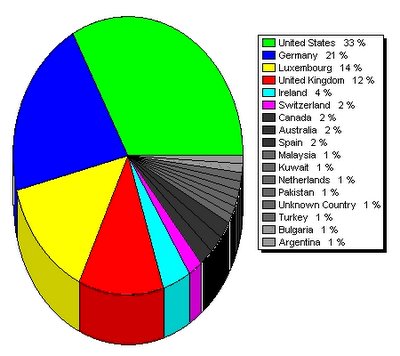A recurring theme on my blog is that stuttering therapies are behavioural therapies and that behavioural therapies always show good short-term results, but rather poor long-term outcomes. It is easy to get someone fluent but difficult to maintain the fluency. I possibly obsessively compare stuttering to overweight and drug addiction. You can loose weight rather quickly with a strict diet over 2-3 months, and you can loose your physical and psychological addition to drugs, be it alcohol, smoking, or heroine, within weeks.
However, the hidden bleak fact about behavioural therapies is relapse. It is the norm that people relapse rather than the exception. I always cite an article, which followed 500 people during a diet over 2 years. They volunteered to participate in a diet, and virtually everyone benefited. I remember reading about an average weight loss of about 10 kg. The controlled diet went over three months. At the end of this period, the patients were given instructions to maintain their lower weight, in short: balanced meals with a lot of vegetables, and sport activities. What wer the result? Only 5% mantained the lower weight, and on average the weight was above the weight before the diet!!!
I have been thinking about the dynamics leading to relapse. I view the human being as two different entities interacting: the cortex (which does the rational thinking), and the limbic system (which generates the emotions). During a diet, my cortex will run the show if I decline a piece of chocolate, and my limbic system will win whenever I eat the piece of the chocolate. The irony really is that everyone on a diet has made the rational long-term choice to go on a diet, but the emotional short-term urges might have different plans.
A solution is to reduce or eliminate the emotional short-term urges. Let me just briefly say something positive about emotional short-term urges. They are essential for our survival. Our brain needs to make us feel hungry, angry, or lonely to ensure a better survival. We also need to feel comfort in our habits, the things that we know from past experiences. Without our habits, we could not live a simple life without thinking about every tiny activity. The problem is that our limbic system cannot think, but only associates to each activity or situation or idea an emotion like good or bad irrespective of its true usefulness. Also, it is essential that we have trouble to unlearn a habit quickly.
Using this framework, I see two ways of reducing or eliminating the emotional short-term urges. First, a stronger traffic from the cortex to the limbic system, i.e. your cortex send more and stronger messages to your limibic system and overriding the limbic system. Second, the urges are weaker or eliminated by changing the emotional association to an activity or situation or idea.
To achieve a stronger traffic from the cortex, you need to tell yourself constantly what you want, that means constant broadcast the right message: I like to eat an apple instead of chocolate. Chocolate made me sick last time. I eat chocolate tomorrow but not now. (Dont worry if you lie to yourself, your limbic system buys the lie.) This self-talk goes under the name of auto-suggestion. Write down the things you want to think, and repeat them to you over and over again. To achieve a re-programming of the limbic system, you need to teach the limbic system the right association you want to have. For example, you are scared of spiders. You need expose yourself bit by bit several times in a quick succession to the situation, and slowly you will learn a new association.
So how does this understanding help with avoiding relapse? I want to generalise this question a bit and include: How can I make myself not forget to speak slower, make more pauses, or use a gentle onset? First, use auto-suggestion and write down messages that you want to broadcast to yourself constantly, for example: I like to make pauses, or Pauses make me feel comfortable. Say them to yourself as often as possible with positive emotional intensity... ideally you do this broadcast obsessively. Second, you need to get into real situations and learn a positive association to your new behaviour. For example, if you get nervous or scared when you pause, go on the street and ask people for a direction, say Hello, and then count until 2 until you ask for direction. do this 10 times in a rapid sucession. if you want, start doing this method first on your own, then ask your dog whether he would be willing to listen, then a friend, and so on...
I am 100% sure that these methods work very efficiently when used. At the beginning, you detect no significant impact, but after 2-3 weeks you will be amazed how you are suddenly doing (or even have to do) these things automatically. I have tried myself and the methods work. But there is one big problem, that I also experienced a lot. I forget to do it or somehow invent millions of excuses for not doing. :-) You either need to have a determination to follow through. Also, guidance from a therapist ideally in the settings of an intensive therapy course is essential. It is easier if you are put under some pressure and in an environment with low distraction.
The question is also how much pressure should a therapist exercise on a patient that, for example, wants to use a technique but consistently failed to do so. One way would be to put pressure on the patient and tell the patient off and say that s/he must work harder. Another way would be that patient need to realise him/herself and if they fail to use a method, they dont really want to change. I believe the best way forward is the middle way in that the therapist should make the patient manipulate him/herself via autosuggestion and provide a very strict framework to change association to activities or situations. So you can tell a patient to slow down, or can give feedback "you have not slowed down" and work indirectly by adding "I speak slower" in the auto-suggestion repertoire.
OK. That is enough. Many ideas, but possibly not 100% coherent... :-)







